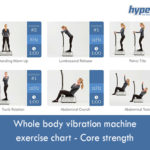
Osteoporosis is a tricky disease that erodes the bones and weakens them, but has no visible symptoms in the initial stages. The condition is progressive and gets worse with age, the loss of bone mass starting around the age of 30.
Until that age, a healthy person builds more bone than he or she loses, but the hormonal changes, the changes in diet and lifestyle habits, medications, genetics and the aging process with all its internal changes trigger the decline in bone mineral density.
Women are four times more likely than men to develop osteoporosis, and the condition progresses faster in females, as bones are naturally thinner and lighter. Once the bone breakdown begins to outpace bone buildup, the likelihood to develop osteoporosis and to break a bone as a result of mass loss increases.
Although there are tests that can diagnose this condition, most people with osteoporosis find out about their disease when they fall and suffer a fracture, or when they start accusing severe back pain. In others, osteoporosis is diagnosed after the patients notice changes in their posture as a result of spine deformities, or when a vertebrae collapses as a result of a fall.
The back and hips are the most affected areas, and once a bone is damaged, the risk of suffering repeated fractures increases. Unfortunately, fractures are not only painful but also debilitating, and can significantly decrease one’s quality of life. To prevent osteoporosis and keep the bones strong, the best solution remains strength exercises.
The hormonal changes that occur during menopause disrupt the organism’s bone building process. The decline in estrogen levels prevents the body from absorbing and preserving calcium in the bones in an efficient manner, and this accelerates bone breakdown.
Statistics show that on average, a women loses 10% of her bone mass during menopause. The most effective way to slow down this process is to adopt an active lifestyle and incorporate strength exercises in your daily routine. If you’re not into conventional resistance training or weight lifting exercises, you can opt for whole body vibration training, as research shows this form of physical activity has similar effects in postmenopausal women.
A systematic review conducted by German researchers found that exercising on a vibration machine stimulates not only the muscles, through the mechanical stimuli, but also the bones, the temporary bone deformation leading to an increase in bone density. The analysis included 5 studies totalling 368 participants, with an average age of 60.7-79.6 years.
132 participants trained on vertical machines, while 67 participants trained on pivotal or side-alternating whole body vibration platforms. The selected frequencies varied between 12 Hz and 40 Hz for the first group, and was 12.5 Hz for the side-alternating WBV group. Amplitude varied between 1.7 and 12 mm, and the G-force or acceleration varied between 0.1G and 10G.
The review showed significant effects of vibration training on muscle contractions and dynamic strength in both vertical and pivotal WBV machines, and improvements in the lumbar spine and the hip bones, by 0.5-0.7% respectively 0.8-0.9%.
This is not the first research paper to prove the effectiveness of vibration exercises in strengthening the bones. Another study published in the Osteoporosis international journal found significant but small improvements in bone mineral density in postmenopausal women (hip bone) and children (tibia and spine), but no difference in the BMD of young adults.
A research paper conducted by UK researchers and published in the Age and Aging journal found that exercising on a vibrating plate can stimulate bone formation in older patients. 61 people aged 80+ years were involved in this study, being randomly assigned to either vibration training or sham groups. Participants performed 3 sessions of WBV per week, for 12 weeks, the vibration group showing significant gains in bone formation compared to the sham group.
We therefore recommend you to include whole body vibration into your training routine at least 2-3 times per week, in combination with aerobic and strength exercises or as a replacement for resistance training, if your fitness level prevents you from practicing conventional resistance exercises.
Have something to add to this article? Comment below or join our Facebook community and share your thoughts with us!

Updated on: 08.09.2021 The lymphatic system is involved not only...

Stress can make you gain weight – we’ve heard this...

Various theories exist to answer this question. As you will...

Our series of whole body vibration machine exercise articles continues...

Rebounding (an exercise technique involving jumping on a mini-trampoline) is...